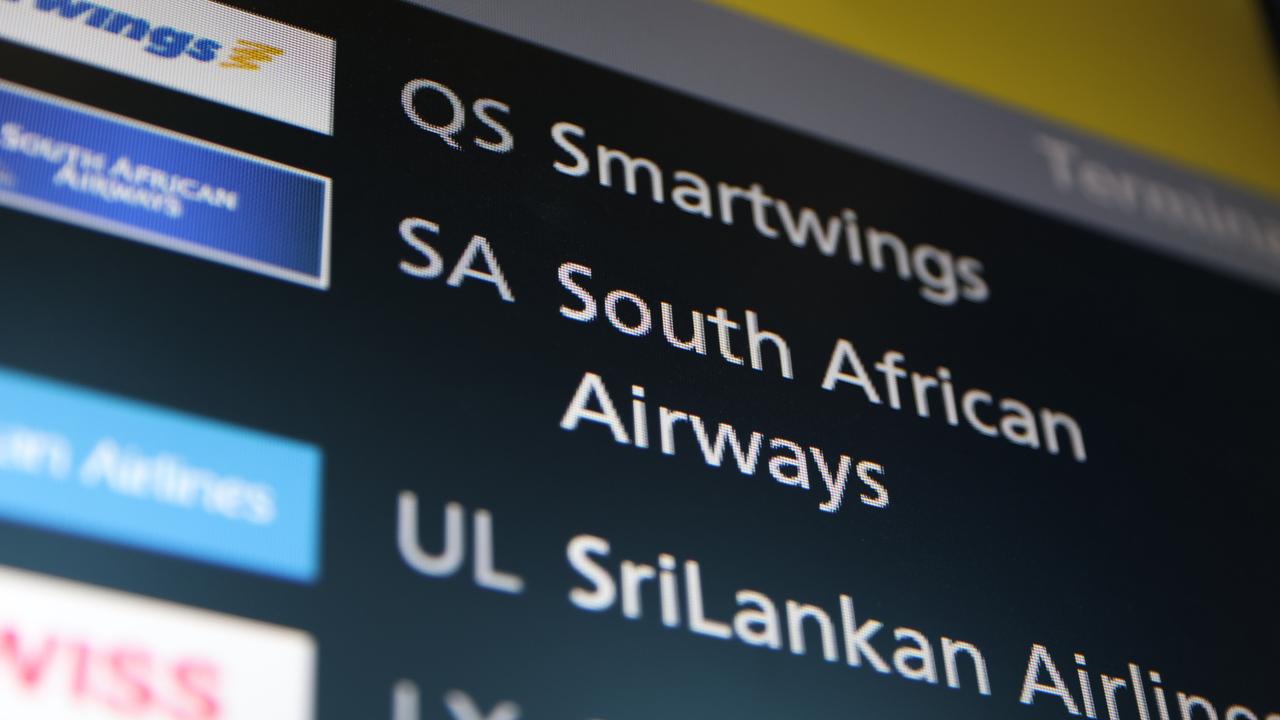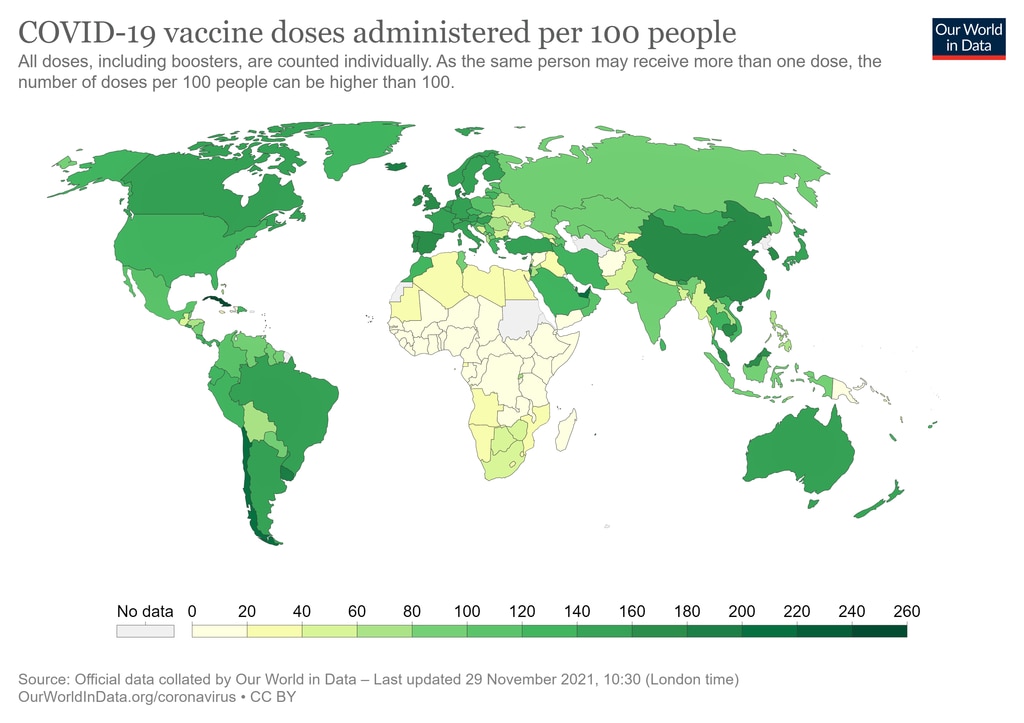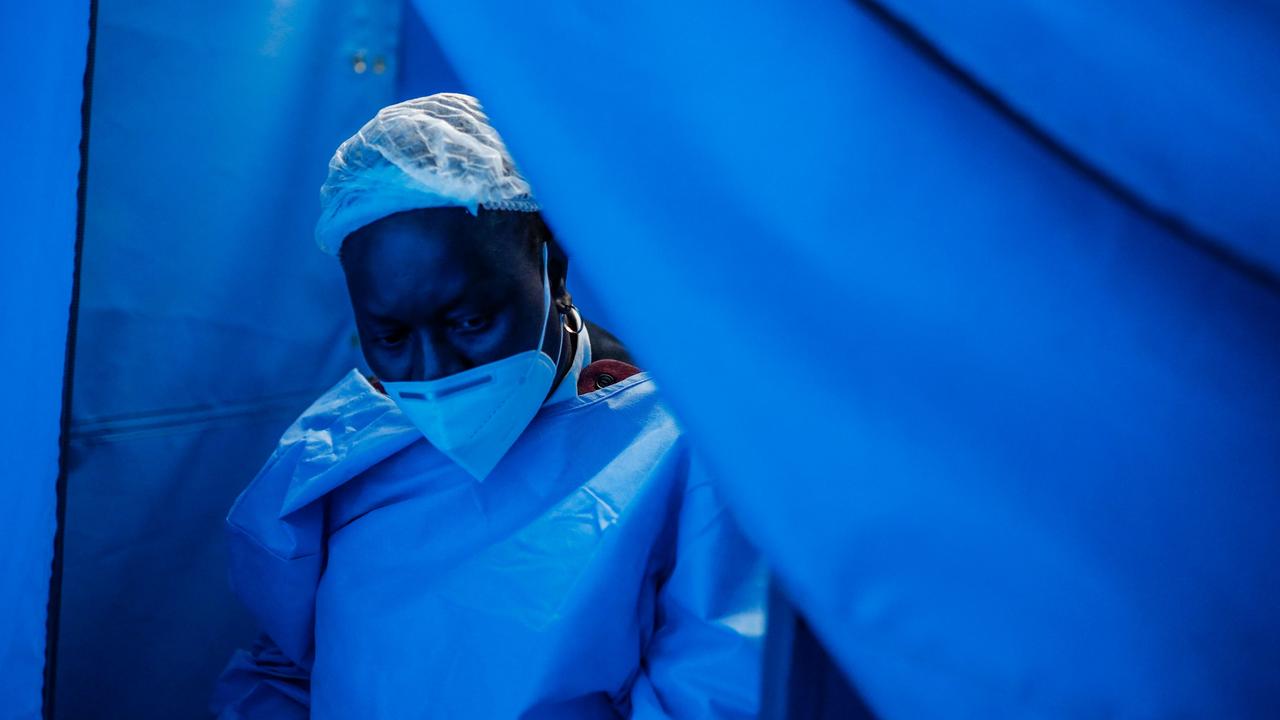Map reveals low vaccination rates in Africa that have made continent a ‘reservoir’ for variants
Africa’s low vaccination rate means it has become a ‘reservoir’ for Covid variants, and the blame is being put on the West.
If, in late 2021, a new Covid-19 variant was to be detected anywhere in the world it was highly likely it was going to be in Africa.
New variants love an unvaccinated population. And one look at a map of the world’s most vaccinated nations shows a glaring hole over almost the entirety of the African continent.
In Singapore, 92 per cent of the population is fully vaccinated against Covid-19; in Nigeria – Africa’s most populous nation – just 1.63 per cent of residents are double jabbed.
And fingers are being pointed at wealthy nations that have prioritised booster shots and jabs for kids while many African nations have struggled to give people a single inoculation.
A global health expert has said Omicron’s emergence was “a natural consequence of being too slow to vaccinate the world”.

Omicron was first discovered in Botswana on November 11 before its spread across the border to South Africa.
South Africa’s well developed health surveillance system was able to examine the variant and confirm it had up to 32 mutations. These mutations could make it more transmissible and possibly more effective in bypassing vaccines.
Omicron has now spread to Europe, Hong Kong and Australia as well as into other southern African countries.
South Africa’s vaccination rate, at barely 24 per cent double dosed, is far below scores of other countries.
Even Russia, one of the least vaccinated countries in Europe, is now pushing 40 per cent double dosed.
According to website Our World in Data, per 100 people South Africa has administered 42 doses. Compare that to the United Arab Emirates which has administered 216 jabs per 100 people.
And yet South Africa is a shining example compared to much of the rest of the African continent.
Chad is on four doses per 100 people, Tanzania 1.63 doses and the Democratic Republic of the Congo on 0.2 jabs.
The Africa standout is Morocco which has given out 130 jabs per 100 people. It’s total vaccination rate of 61 per cent is close to that of Israel.
Interestingly Botswana, where Omicron was spotted initially, has jabbed a higher proportion of its population than South Africa. One of Africa’s most stable and wealthiest per capita countries, it has administered more first doses abut also has fewer people double jabbed than South Africa.

Unvaccinated a ‘variant reservoir’
However, overall, Africa’s below par vaccination rates means it is a perfect place for variants to emerge.
“An unvaccinated pool of individuals provides a reservoir for the virus to continue to grow and multiply, and therefore more opportunities for such variants to emerge,” wrote Rutgers University microbiology professor Emanuel Goldman in scientific JournalPNAS in September before Omicron emerged.
“So far, we have been lucky that the variants that have emerged can still be somewhat controlled by current vaccines, probably because these variants evolved in mostly unvaccinated populations and were not subject to selective pressure of having to grow in vaccinated hosts.”
It’s still not known if Omicron will evade vaccines but the fact it’s emerged within an under-unvaccinated area does provide hope that the protection offered by jabs may still be effective.
Dr Micheal Head, a global health expert at the UK’s University of Southampton, told CNN that Omicron’s arrival was a “natural consequence” of being too slow to vaccinate.
“We still have large unvaccinated populations, like we have across sub-Saharan Africa, and these are susceptible to big outbreaks,” he said.
Dr Head said it was likely Omicron had been circulating for some time in African nations before South Africa’s sophisticated health systems identified it.
Previous variants have occurred, or at least have been discovered even if they came from elsewhere, in largely unvaccinated nations. Alpha was detected in the UK in December 2020 when barely anyone had been jabbed and Delta was put on the radar by in India in February.

Africa’s low vaccination rate
Why Africa has such as a sluggish jab rate is due to a number of factors.
One is the rollout of available vaccines. In May, South Africa stopped putting AstraZeneca in arms after a study suggested it was less effective against the Beta variant which was spreading in July through the country.
However, the AZ jab has passed muster against other variants, including Delta, and could indeed prove to be effective against Omicron.
Another reason is vaccine hesitancy. People living in Africa are as susceptible to anyone else worldwide to vaccine misinformation spread online.
Distribution is also a challenge with doses demanding cold storage over a vast area.
But a key factor is quite simply a lack of jabs to give out.
A report in October, released a month before Omicron appeared, warned that 20 low income countries would only reach 70 per cent fully vaccinated in 2030 at the current rollout rate.
The analysis from group End Covid for All urged the Australian government to donate $250m to the international effort, dubbed COVAX, to ensure poorer nations didn’t miss out on jabs.
“Epidemiologists have been saying that in developing countries, the low vaccine rate vaccination rates will almost certainly lead to mutant strains,” End Covid for All campaign director Tim Costello said this week, reported SBS.
“Rich countries bought and ordered vaccines for five times our population. We had the money to buy them and secure that. That’s why the poor, particularly in Africa and elsewhere, missed out.”

More boosters in rich nations than total doses in poor nations
The aim of COVAX was to deliver two billion jabs to developing nations by the end of 2021. Just a quarter of that amount has actually been delivered.
What’s been called “vaccine inequity” means more third dose booster shots have now been given out in rich countries that total Covid vaccines doses altogether in low income countries.
So while millions of people from Canada to Chile and the UK to US are relaxing post booster, safe in the knowledge they are vaxxed to the max; people from Malawi to Mozambique are wondering when they will get their first shot.
The longer they have to wait the more likely another Omicron-esque variant will pop up.
“The real danger is a future variant, which will be the legacy of those people who are not getting vaccinated providing a breeding ground for the virus to continue to generate variants,” said Prof Goldman.
“A variant could arise that is resistant to current vaccines, rendering those already vaccinated susceptible again.”






